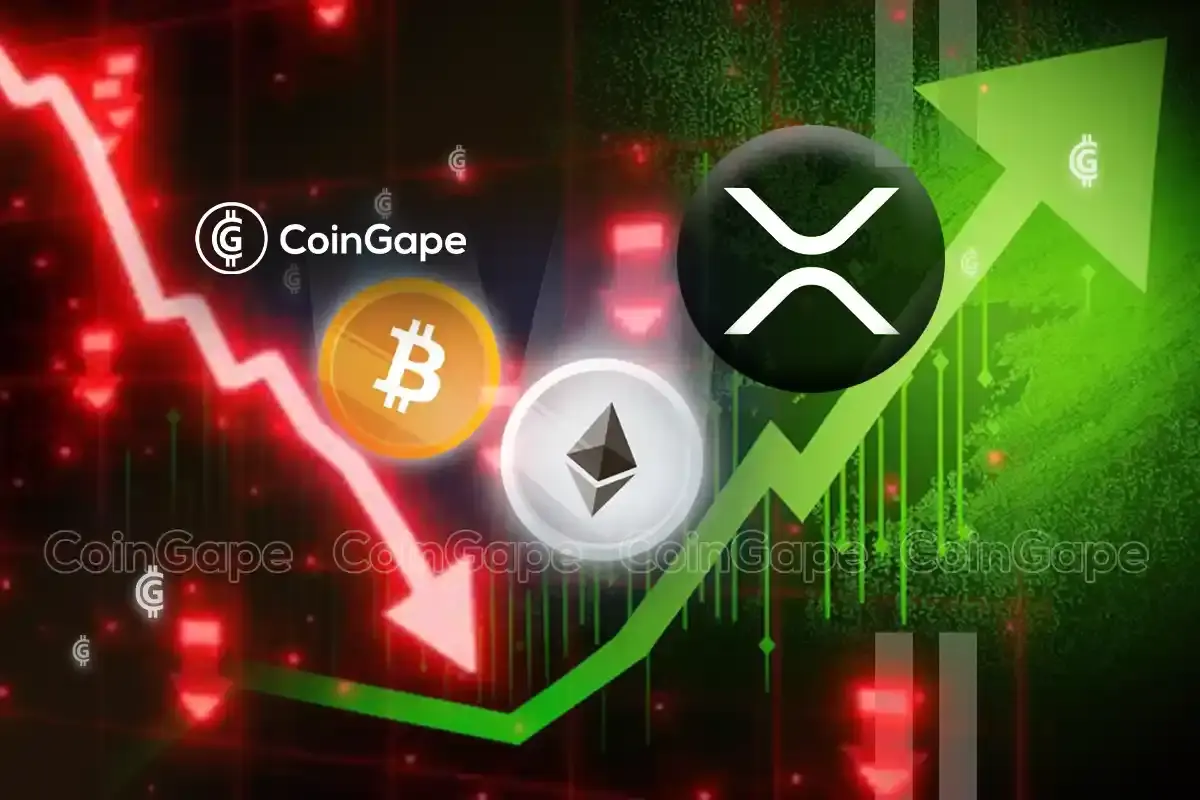Ethereum
MIT brothers accused of mining Ethereum to steal $25 million

Many cryptocurrency traders are playing fast and loose with the systems in place to bolster decentralized finance (DeFi), using a variety of hacks to gain an advantage in their trades – from sandwich attacks to sweepstakes scams – and losses typically amount to tens of millions. dollars per month.
Yet two traders – brothers who both graduated from the Massachusetts Institute of Technology – took their plan too far, exploiting a vulnerability in a common component used by traders on the Etherium blockchain to make nearly $25 million in a attack that lasted 12 seconds, the U.S. Department of Justice charged on May 16. The two brothers — Anton Peraire-Bueno of Boston and James Peraire-Bueno of New York — discovered the software flaw in 2022, prepared and planned the attacks for months, then executed the theft in April. 2023, say law enforcement.
The attack worried traders and technologists, calling into question “the very integrity of blockchain,” Damian Williams, U.S. Attorney for the Southern District of New York, said in a statement. a statement from the Department of Justice announcing the indictment.
“The brothers, who studied computer science and mathematics at one of the most prestigious universities in the world, allegedly used their specialized skills and education to alter and manipulate the protocols that millions of data users rely on. “Ethereum across the world,” he said. “And once they put their plan into action, their heist lasted only 12 seconds. This alleged scheme was new and has never been charged before.”
Cryptocurrency has gained legitimacy over the past fifteen years, but continues – in many ways – to be a Wild West. In 2023, over $24 billion in transactions ended up in illicit cryptocurrency wallets or addresses – although more than half of the total belonged to sanctioned organizations and countries, and the total fraud rate is only 0.34%, according to Chainalysis, a blockchain intelligence firm.
While ransomware gangs prefer Bitcoin, Ethereum has seen its share of attacks, since the $60 million DAO hack in 2016 this led to a hard fork – a rewrite of the Ethereum ledger – towards the over $600 million in Ethereum stolen from Ronin network players.
In many ways, the ecosystem behind cryptocurrencies is suffering from the growing challenges that the Internet has faced over the past three decades, says Oded Vanunu, chief Web 3.0 technologist and head of product vulnerability research at within the cybersecurity company Check Point Software Technologies.
“It’s crazy, because we’re seeing tactics already implemented on Web 2 platforms that take a different form in Web 3 protocols,” he says.
Memory pools and maximum extractable value
Cryptocurrency transfers, the proposal of a smart contract, and the execution of smart contracts are all transactions recorded on the blockchain — in the case of Ethereum, a public distributed state machine. However, before being recorded, each transaction is placed in a memory pool, or memory poolwhile waiting for validation and execution, which usually takes a few steps.
A participant in the ecosystem known as a “block builder” will create a set – or block – of transactions and be paid by the initiator of each transaction for its completion, while a “block proposer” will choose blocks according to the costs announced by the manufacturer. , validates them and sends these transactions to its peers on the blockchain network. Typically, a builder attempts to structure blocks based on a maximum extractable value (MEV) strategy, seeking to maximize profits.
Dividing participants into proposers and builders – what is called a proposer-builder split (PBS) – divides the responsibility for validating transactions to limit monopolization of the process by large traders who might order transactions in specific ways for generate profits. MEV bots help traders identify and create trade sets that maximize their profits on a trade.
Yet there is still much traders can do to tip the scales. In a sandwich attack, for example, the trader benefits from natural price increases or decreases caused by large cryptocurrency transactions. When a large buy order appears, a manufacturer can place a buy order for the cryptocurrency before the order, and a corresponding sell order afterward, thereby taking advantage of the price change caused by the initial buy order. .
For many DeFi participants, MEV traders are little better than the equivalent of modern-day ticket scalpers, but they play a vital role, says Adam Hart, product manager at Chainalysis.
“To many, MEV strategies look like hyper-sophisticated, deep-pocketed traders using their resources to profit by forcing less sophisticated traders to accept worse prices,” he says. “However, others argue that MEV is inevitable in an open and transparent blockchain network, and that MEV traders play a positive role in ensuring that arbitrage opportunities are exploited quickly so that asset prices remain aligned between protocols.”
An attack on MEV traders
The Peraire-Bueno brothers discovered a vulnerability in an open source component of a common tool, known as MEV-Boost Relay, according to a post-mortem analysis of the incident. MEV-Boost is a protocol aimed at limiting the centralization of the two components of the Ethereum blockchain – the proposers and the builders – and the monopolization of profits, which could have historically led to a few players dominating the blockchain process.
A key criterion of the MEV-Boost protocol is that the proposer undertakes to validate a block according to the price, before knowing its content. The brothers reportedly discovered that signing the header gave them the information contained in the block, even if the signature was not valid, the autopsy stated.
“The attack…was possible because the exploited relay revealed block bodies to the submitter, provided the submitter correctly signed a block header,” the analysis states. “However, the relay did not check whether the signed block header was valid.”
Although the vulnerability could have continued to cause problems for traders, it was not an attack directly against the Ethereum network or its validators, but rather against a specific – albeit common – third-party component, explains Mario Rivas, manager global blockchain security practices. at NCC Group.
“The attack exploited a vulnerability in the relay code, which caused the relay to send private transactions to the block builder when it signed a block with invalid headers,” he explains. “This vulnerability was quickly fixed, mitigating the risk of similar attacks unless additional vulnerabilities are identified.”
Law enforcement achieves victory
The investigation and indictment, however, constitute a victory for the DOJ. American law enforcement is increasingly cracking down on scams, hacking and other questionable practices linked to cryptocurrencies. In August, for example, the U.S. Securities and Exchange Commission accused correctional officer of creating worthless cryptocurrency and sell it to other members of law enforcement.
Yet other attacks have fallen short of the threshold for prosecution. In one 2021 attack, for example, a trader admitted to selling an illiquid token to a rival – in what is known as a salmonella attack – and making money through the automated system of his rival by buying the worthless coin, according to a Forbes report.
The brothers’ alleged attack stands out from these controversial tactics, says Check Point’s Vanunu.
“In essence, while both types of attacks are harmful, the MIT brothers’ actions were explicitly illegal due to their direct and unauthorized exploitation of the vulnerabilities to steal funds, whereas [a] Salmonella attack lever[s] market manipulation and deception, staying within the darkest confines of legality in the crypto world,” he says.
The investigation into this scheme and subsequent indictment underscore that government officials and their private partners are keeping pace with the latest innovative attacks. Despite the sophistication of the exploit and the laundering of the proceeds, investigators traced the funds, identified two suspects and made their arrests, Chainalysis’ Hart said.
“The exploit by the Peraire-Bueno brothers is an incredibly innovative and technically sophisticated attack, and is the first time a bad actor has managed to abuse the MEV system widely used by Ethereum block builders in this way and at this degree,” he said. . “This is what makes this indictment so impressive and a promising sign for the future in the fight against cryptocurrency-based crime.”
Ethereum
Cryptocurrency liquidations surpass $200 million as Ethereum and Bitcoin plummet

Cryptocurrency market liquidations hit their highest level in a week on Wednesday as the price of Bitcoin fell below $60,000.
Over the past 24 hours, over 74,000 traders have been liquidated for $208 million, CoinGlass the data shows it.
The majority of those losses, about $184 million, went to investors holding long positions who had bet on a price rise.
The largest liquidations hit Ethereum investors, at $55.5 million, almost entirely on long positions, the data showed.
Current issues surrounding US monetary policy, geopolitical tensions, and the upcoming US presidential election in November are expected to impact the price of the leading cryptocurrency throughout 2024.
Bitcoin abandoned The stock price fell from $62,200 to $59,425 intraday. The asset has since recovered its losses above $60,200, but is still down 3% over the past 24 hours.
Solana, the world’s fifth-largest cryptocurrency by market capitalization, was the worst hit among the top 10 cryptocurrencies, down about 8% to $140. Solana had been riding high on New York investment management firm VanEck’s filing of its Solana Trust exchange-traded fund late last month.
Major cryptocurrencies have been falling over the past month. Ethereum has fallen more than 12% over 30 days despite growing interest in the launch of Ethereum spot ETFs.
Some analysts predict that new financial products could begin marketing in mid-Julywith at least one company predicting that the price of ETH will then take offBitcoin is down 12% over the same period.
Certainly, analysts always see further price increases this yearThe current market cooling represents a precursor to another major price surge in the coming months, Decrypt reported Monday.
On Wednesday, analytics firm CryptoQuant released a report examining Bitcoin Mining Metrics and highlighted the conditions for a return of prices to current levels.
Edited by Sebastian Sinclair.
Ethereum
Volume up 90%: good for ETH price?

Ethereum (ETH) has emerged as a beacon in the sea of blockchains, with a staggering 92% increase in decentralized application (dApp) volume over the past week. But the news comes with a layer of complexity, revealing a landscape of both opportunity and potential setbacks for the leading blockchain.
Cheap gas fuels the fire
Analysts attribute the explosion in decentralized application volume to the Dencun upgrade in March, which significantly reduced gas costs – the cost associated with processing transactions on the Ethereum network.
Lower transaction fees have always attracted users, and this recent development seems to be no exception. The surge in activity suggests a revitalized Ethereum that is likely to attract new projects and foster a more vibrant dApp ecosystem.
NFT craze drives numbers up
While overall dApp volume (see chart below) paints a positive picture, a closer look reveals a more nuanced story. This surge appears to be driven primarily by an increase in NFT (non-fungible token) trading and staking activity.
 Source: DappRadar
Source: DappRadar
Apps like Blur and Uniswap’s NFT aggregator have seen significant surges, highlighting the rise of the NFT market on Ethereum. This trend indicates a thriving niche in the Ethereum dApp landscape, but raises questions about the platform’s diversification beyond NFTs.
A look at user engagement
A curious problem emerges when looking at user engagement metrics. Despite the impressive increase in volume, the number of unique active wallets (UAWs) on the Ethereum network has actually decreased.
Ethereum is now trading at $3,316. Chart: TradingView
This disconnect suggests that current activity could be driven by a smaller, more active user base. While high volume is certainly a positive indicator, seeing broader user participation is essential to ensuring the sustainability of the dApp ecosystem.
A glimmer of hope ?
A positive long-term indicator for Ethereum is the trend of decreasing holdings on the exchange, as reported by Glass nodeThis suggests that ETH holders are moving their assets off exchanges, potentially reducing selling pressure and contributing to price stability.
If this trend continues, ETH could potentially target $4,000 this quarter or even surpass its all-time high. However, this price prediction remains speculative and depends on various market forces.
 Ether price expected to rise in coming weeks. Source: CoinCodex
Ether price expected to rise in coming weeks. Source: CoinCodex
Ethereum at a Crossroads
Ethereum is at a crossroads. Dencun Upgrade has clearly revitalized dApp activity, particularly in the NFT space. However, uneven dApp performance and the decline of the UAW are raising concerns about the long-term sustainability of this growth. Network growth, measured by the number of new addresses joining the network, is also slowing, according to Santiment, which could potentially hamper wider adoption.
The short-term price outlook for ETH remains uncertain. While long-term indicators, such as declining exchange holdings, suggest potential for price appreciation, slowing network growth could lead to a price decline in the short term.
Look forward to
The coming months will be crucial for Ethereum. The platform must capitalize on the renewed interest in dApps by attracting a broader user base and fostering a more diverse dApp ecosystem beyond NFTs. Addressing scalability issues and ensuring user-friendly interfaces will also be essential to sustain growth.
If Ethereum can overcome these challenges, it has the potential to cement its position as the premier platform for decentralized applications. However, if it fails to adapt, other waiting blockchains could capitalize on its shortcomings.
Featured image from Pexels, chart from TradingView
Ethereum
Ethereum, Bitcoin, and XRP Behind $1.5 Billion Losses in Cryptocurrency Scams

The first half of 2024 has seen a surge in major hacks in the cryptocurrency sector. Ethereum (ETH)Bitcoin (BTC) and XRP have resulted in losses of over $1.5 billion due to cryptocurrency scams. This year, over 200 major incidents have resulted in losses of approximately $1.56 billion.
Cryptocurrency Scam Losses Reach $1.5 Billion
According to data from Peck Shield Alert, only $319 million in lost crypto funds have been recovered. Furthermore, this year’s losses represent a staggering 293% increase over the same period in 2023, when losses totaled $480 million.
Overview of Cryptocurrency Scams in 2024, Source: PeckShieldAlert | X
Additionally, DeFi protocols have been the top targets for hackers, accounting for 59% of the total value stolen. More than 20 public chains have suffered major hacks during this period. Additionally, Ethereum, Bitcoin, and XRP top the list for the amount lost via cryptocurrency hacks.
Additionally, Ethereum and BNB Chain were the most frequently targeted, each accounting for 31.3% of the total hacks. Meanwhile, Arbitrum followed with 12.5% of the attacks. One of the most significant incidents occurred on June 3, 2024.
Bitcoin DMMa major Japanese cryptocurrency exchange, reported a major breach. Attackers stole 4,502.9 BTC, worth over $300 million at the time. The incident highlighted the vulnerabilities of exchanges, especially those that handle large volumes of digital assets.
Read also : XRP News: Whale Moves 63 Million Coins as Ripple Strengthens Its Case
Major XRP, ETH and BTC hacks
A week after the DMM Bitcoin attack on June 10, UwU Loana decentralized finance (DeFi) lending protocol, was compromised. The breach resulted in a loss of approximately $19.3 million in digital assets. The hack underscores the ongoing risks associated with DeFi platforms, which often operate with less regulatory oversight. The platform later offered a $5 million reward to catch the hacker.
Earlier this year, on February 3, 2024, Ripple co-founder Chris Larsen confirmed a major security breach involving his personal wallets. Initially, rumors circulated that Ripple itself was targeted. However, Larsen clarified that the hack involved his digital wallets and not Ripple’s corporate assets.
The hackers managed to transfer 213 million XRP tokens, worth approximately $112.5 million. Additionally, on-chain detective ZachXBT first alerted the community about the suspicious transactions. In response to the theft, Larsen and various cryptocurrency exchanges took swift action to mitigate the impact.
Several exchanges, including MEXC, Gate, Binance, Kraken, OKX, HTX, and HitBTC, collaborated to freeze a significant portion of the stolen funds. Binance alone froze $4.2 million worth of XRP to aid in the investigation.
Additionally, on April 2, 2024, FixedFloat, a Bitcoin Lightning-based exchange, experienced a security breach. Unauthorized transactions resulted in financial losses exceeding $3 million. This incident highlighted ongoing security issues for FixedFloat, following a similar breach earlier in the year.
The company has also faced significant challenges securing its platform against repeated attacks. Additionally, in February, hackers stole $26 million worth of Ethereum and Bitcoin from FixedFloat. These digital assets were then transferred to exchanges for profit.
Read also : Ethereum Doubles Bitcoin’s Network Fee Revenue, Thanks to Layer-2
Ethereum
Ethereum’s Year-Over-Year Revenue Tops Charts, Hitting $2.7 Billion

Ethereum blockchain has been in first place for a year incomesurpassing all major blockchains.
According to data provided by Lookonchain, Ethereum generated $2.72 billion in annual revenue, surpassing the Bitcoin network by a margin of $1.42 billion. The data shows that Bitcoin accumulated $1.3 billion in revenue over the same period.
Defi Llama Data watch that Ethereum is still the leader in decentralized finance (challenge) with a total value locked (TVL) of $58.4 billion, or 60.9% of the entire market. The blockchain recorded a 30-day fee revenue of $131 million, according to the data aggregator.
Bitcoin’s TVL is currently set at $1 billion.
The network of the second largest cryptocurrency, ETH, witness a 155% year-over-year increase in its fee revenue in the first quarter of this year, as the cryptocurrency market saw a bullish trend.
Tron comes in third with annual revenue of $459 million. Solana and BSC also recorded nine-figure revenues of $241 million and $176 million, respectively.
Notably, Tron is the second largest chain in the challenge scene with a TVL of $7.7 billion. BSC and Solana take third and fourth place with TVLs of $4.8 billion and $4.5 billion, according to Defi Llama.
Avalanche, zkSync Era, Optimism and Polygon reached the top 10 with $68 million, $59 million, $40 million and $23 million in year-over-year revenue, respectively.
-

 Videos9 months ago
Videos9 months agoBitcoin Price AFTER Halving REVEALED! What’s next?
-

 Bitcoin8 months ago
Bitcoin8 months agoBitcoin Could Test Record Highs Next Week in ETF Flows, Says Analyst; Coinbase appears in the update
-

 Videos9 months ago
Videos9 months agoAre cryptocurrencies in trouble? Bitcoin Insider Reveals “What’s Next?”
-

 Videos9 months ago
Videos9 months agoCryptocurrency Crash Caused by THIS…
-

 Videos8 months ago
Videos8 months agoThe REAL reason why cryptocurrency is going up!
-

 Videos9 months ago
Videos9 months agoBlackRock Will Send Bitcoin to $116,000 in the Next 51 Days (XRP News)
-

 Altcoin8 months ago
Altcoin8 months agoThe best Altcoins to buy before they rise
-

 Videos9 months ago
Videos9 months agoDonald Trump: I like Bitcoin now! Joe Biden HATES cryptocurrencies.
-

 Videos8 months ago
Videos8 months agoSolana Cryptocurrencies: the future WILL SHOCK you | What comes next?
-

 News9 months ago
News9 months agoTON, AKT, AR expect increases of 15%+ as the market stabilizes
-

 Videos8 months ago
Videos8 months agoBitcoin Whale REVEALS: The 5 Best Coins to Make You a Millionaire!
-

 Videos8 months ago
Videos8 months agoBREAKING NEWS: The 19 best cryptocurrencies ready to skyrocket!





